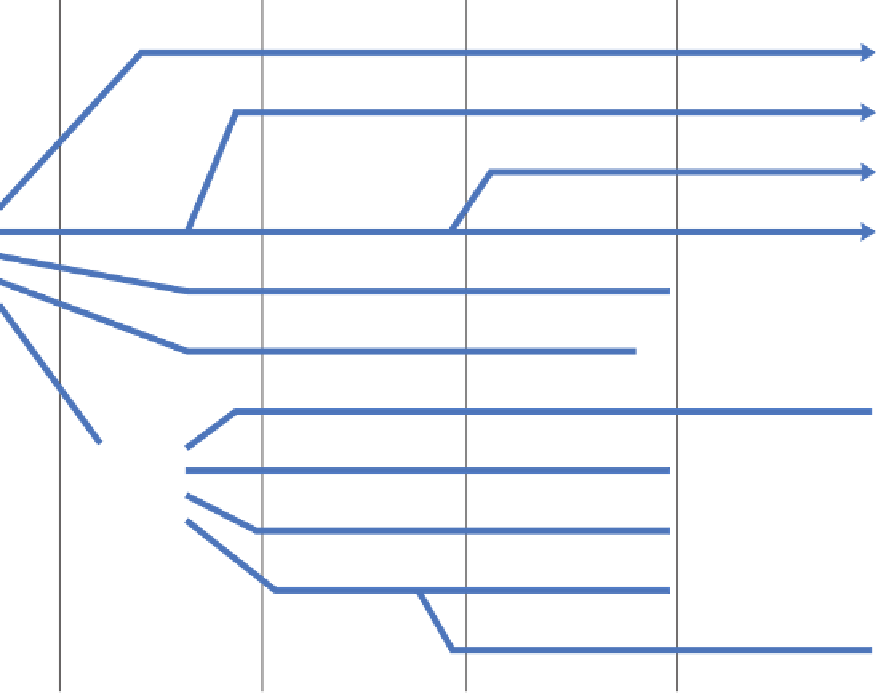Geology Reference
In-Depth Information
Permian
Triassic
Jurassic
Cretaceous
Cenozoic
Turtles
Tuatara
Snakes
Lizards
Stem reptiles
(protorothyrids)
Plesiosaurs
Ichthyosaurs
Crocodiles
Pterosaurs
Ancestral
archosaur
Ornithischian dinosaurs
Saurischian dinosaurs
Birds
◗
Figure 22.24
Relationships among fossil and living reptiles and birds.
were not lizards. Nevertheless, dinosaurs more than any other
animal have inspired awe and thoroughly captured the public
imagination. Unfortunately, their popularization in cartoons,
topics, and movies has commonly been inaccurate and has
contributed to misunderstandings. For instance, many people
think that all dinosaurs were large, and because they are ex-
tinct, they must have been poorly adapted. It is true that many
were large—indeed, the largest animals ever to live on land.
But not all were large. In fact, dinosaurs varied from giants
weighing several tens of metric tons to those which weighed
about three kilograms. And to consider them poorly adapted
is to ignore the fact that dinosaurs were extremely diverse and
widespread for more than 140 million years!
Although various media now portray dinosaurs as more
active animals, the misconception that they were lethargic
dim-witted beasts persists. Evidence now available indicates
that some were quite active and perhaps even warm blooded.
It also appears that some species cared for their young long
after hatching, a behavior more characteristic of birds and
mammals. Although many questions remain unanswered
about dinosaurs, their fossils and the rocks containing them
are revealing more and more about their evolutionary rela-
tionships and behavior.
The saurischian dinosaurs include two distinct groups
known as
theropods
and
sauropods
(Figure 22.25). All theropods
were carnivorous bipeds that varied from tiny
Compsognathus
to giants such as
Tyrannosaurus
and similar, but even larger,
species (see Geo-inSight on pages 618 and 619, and Table 22.1).
Since 1996, Chinese scientists have discovered several thero-
pods with feathers.* No one doubts that these dinosaurs had
feathers, and molecular evidence indicates that they were com-
posed of the same material as bird feathers.
The movie
Jurassic Park
and its sequels popularized
some of the smaller theropods, especially
Velociraptor
, a
1.8-m-long predator with large sickle-like claws on the
hind feet. This dinosaur and its somewhat larger relative,
Deinonychus
, probably used its claws in a slashing type of
attack. A particularly interesting fossil from Mongolia
shows a
Velociraptor
grasping a herbivorous dinosaur called
Protoceratops
; both perished during a struggle. Despite what
you might see in movies about dinosaurs, theropods, like
predators today, probably avoided large, dangerous prey
and went for the easy kill, preying on the young, old, or
disabled, or they dined on carrion, if available. No doubt
the larger theropods simply chased smaller predators away
from their kills. From the evidence available, theropods
*One feathered specimen purchased in Utah that was reported to have
come from China turned out to be a forgery. It even appeared in
National
Geographic
before scientists exposed it as a fraud.
















































Search WWH ::

Custom Search